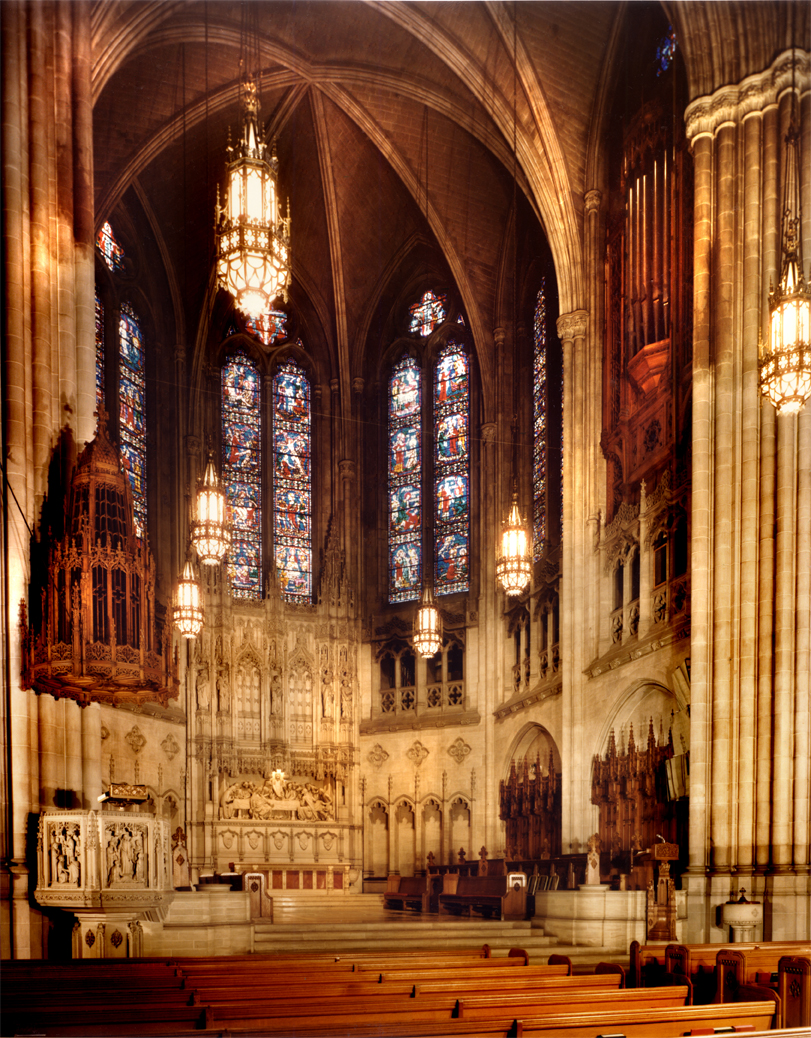
- This event has passed.
“Cram Jam” Church Tour
April 16, 2016 @ 1:00 pm - 5:30 pm

Pittsburgh History & Landmarks Foundation—in conjunction with ELPC, St. Charles Lawanga Parish at Holy Rosary Church, and Calvary Episcopal Church—invites the public to participate in Cram Jam. The free event offers tours of three area churches designed by renowned architect Ralph Adams Cram. Explore and experience their remarkable beauty.
Church docents and PHLF staff will provide information and lead tours at each site. Within breathtaking architectural spaces, participants will see remarkable sculpture, stained glass, and woodwork by exceptional American craftsmen and artists. Please arrive at each church as follows:
- 1 pm: St. Charles Lawanga Parish at Holy Rosary Church (1926–31), 7114 Kelly Street in Homewood
- 2 pm: East Liberty Presbyterian Church (1930–35), 116 South Highland Avenue in East Liberty
- 3:30 pm: Calvary Episcopal Church (1905–07), 315 Shady Avenue in Shadyside. Here, Philip Maye, chair of the Calvary Architectural History Committee, will unveil an interpretive plaque honoring architect Ralph Adams Cram; Al Tannler, PHLF’s historical collections director, will give brief comments about the architect; and Dr. Alan Lewis, organist, will perform the Passacaglia and Fugue in C Minor, by J. S. Bach. A wine-and-cheese reception will follow in the Parish Hall, concluding at 5:30 pm.
Participants must provide their own transportation (car, bus, bike) to each church. Each location is accessible by bus; call the Port Authority at 412.442.2000 for details. Reservations are appreciated by April 14. Contact either PHLF (marylu@phlf.org; 412.471.5808 x527) or Calvary Episcopal Church (lwells@calvarypgh.org; 412.661.0120, x110).
The Architect
Ralph Adams Cram, the son of a Unitarian minister, was born in 1863 in Hampshire Falls, New Hampshire. By the time he was 17, Cram would already have developed a keen interest in architecture leading him to a five-year architectural apprenticeship with the Boston firm Rotch & Tilden. It was also during this time that Cram would begin his second career as a writer by composing pieces for the Boston Evening Telegraph. In 1889 Cram established his own architectural firm with Charles F. Wentworth. Cram & Wentworth was succeeded in 1892 by Cram, Wentworth & Goodhue (with Bertram Grosvenor Goodhue), and in 1897 by Cram, Goodhue & Ferguson (with Frank W. Ferguson). In 1903, CG&F opened a New York office under Bertram Goodhue’s direction. Ten years later, Goodhue established his own firm in New York and Cram’s Boston firm became Cram & Ferguson.
Cram, an Episcopalian convert, is best known for his church architecture although he also designed a handful of residential and collegiate buildings throughout his career. Cram’s style would come to be known as American Gothic and was inspired by twelfth-century ecclesiastical building construction innovations such as the pointed arch and the flying buttress. These innovations allowed for buildings with great height and window openings of unparalleled size. Cram used these tools to create, in his own words, “…old principles recovered, the old materials matched and recalled, the old craft necessarily regained, but with a certain modernism that insures vitality and contemporaneousness.”1
1 Ralph Adams Cram, “Foreword,” The Art of Stained Glass: a note on the work of Henry Wynd Young, worker in glass, mosaic, church decoration, 314 East 34th Street, New York, by Walter E. Wheeler. (Printed privately for Henry Wynd Young, 1921)


